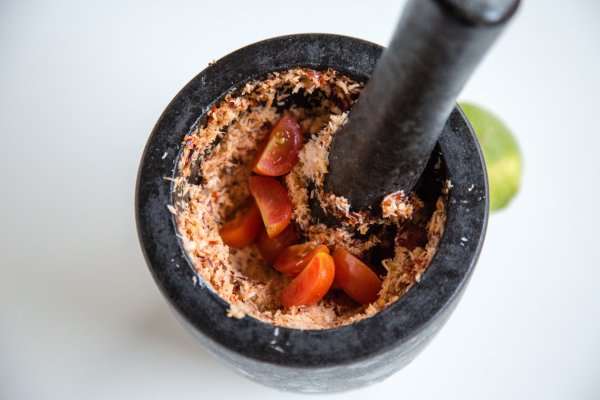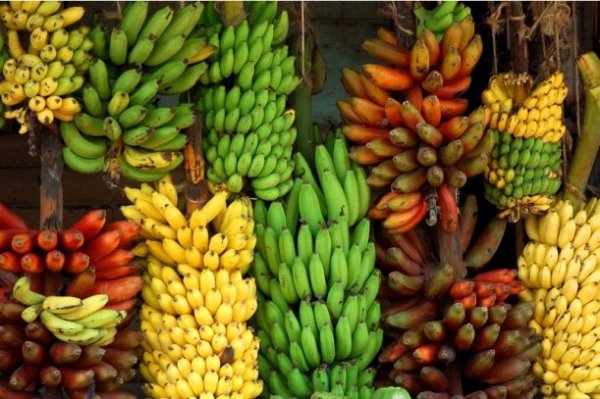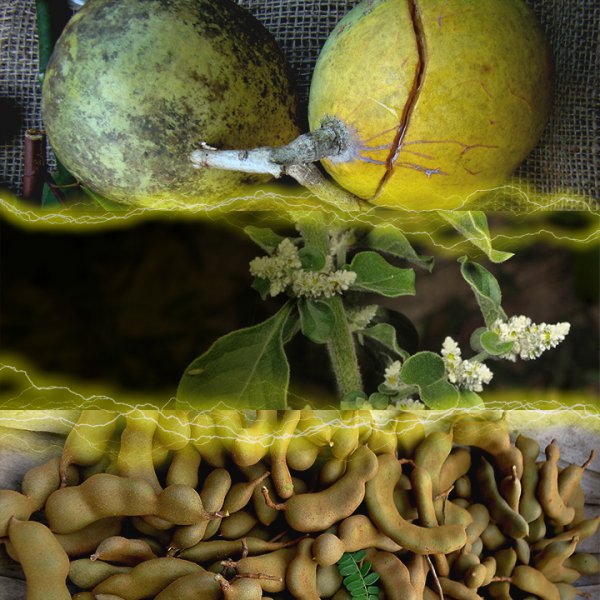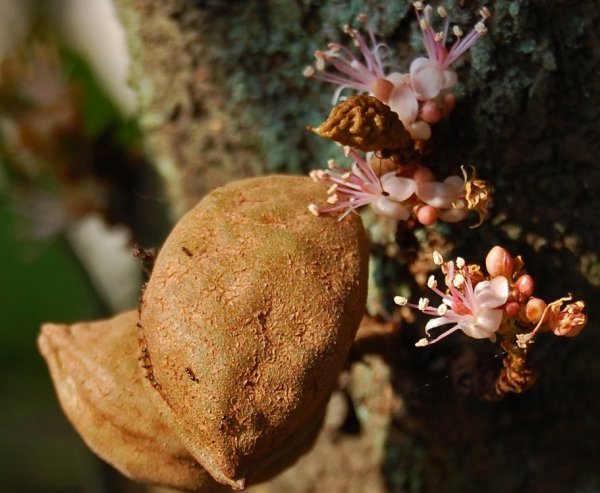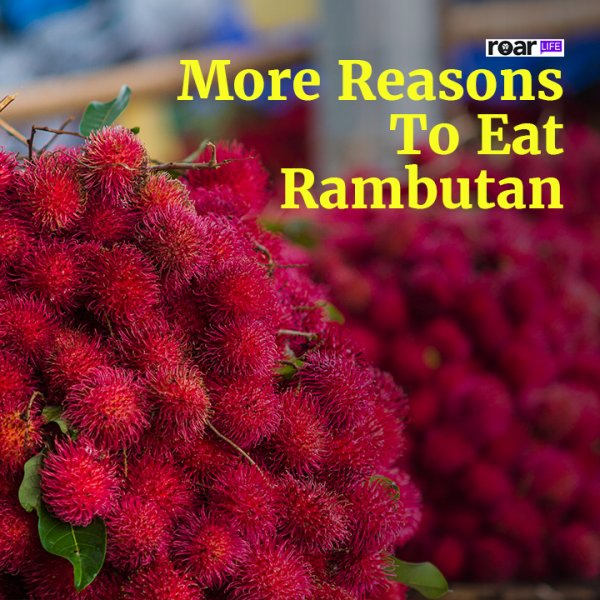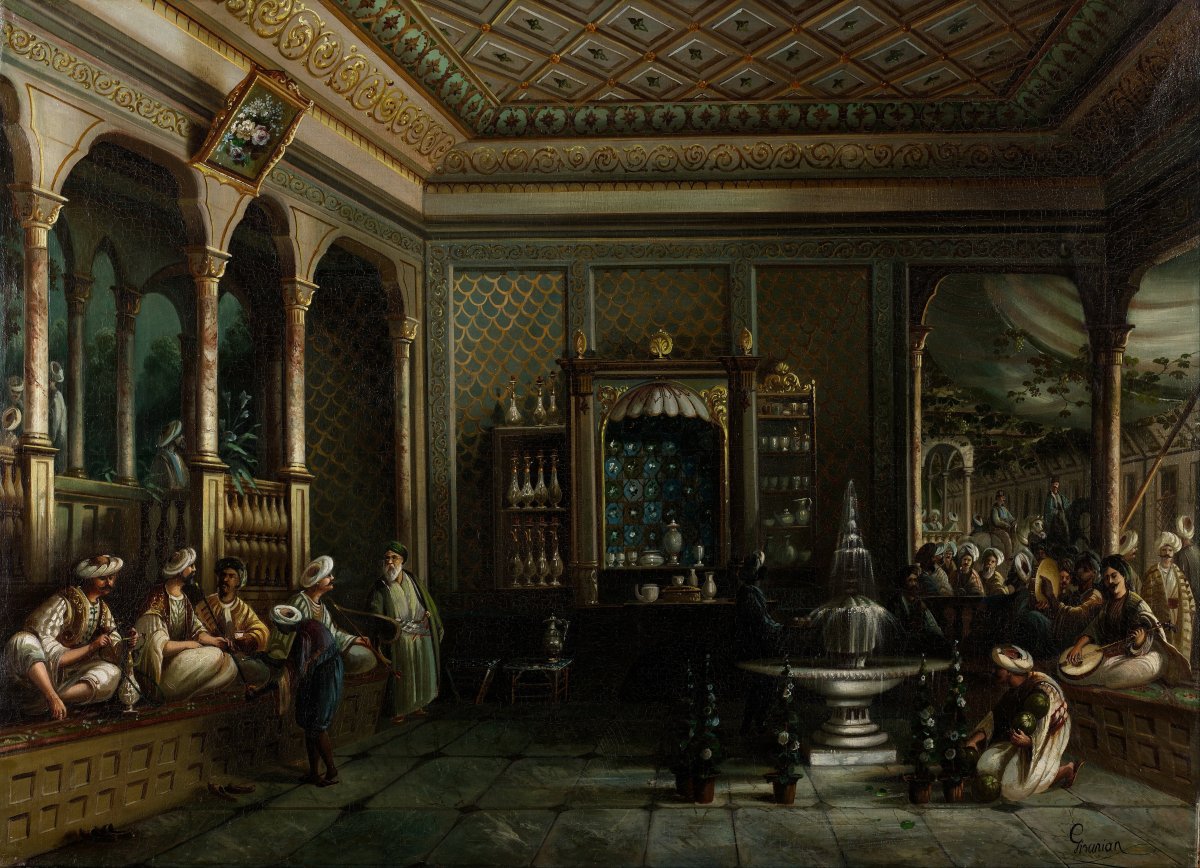
In one Sinhalese folk tale, a man scolded his wife who, furious, decided go to the jungle to get some poison berries to commit suicide. Coming upon some red berries, she mistook them for a poisonous variety. Finding them too bitter to eat, she took them home and roasted them. Again finding them too bitter, she ground them into powder and made an infusion in hot water. However, when she drank this infusion, far from killing her, it gave her a euphoric feeling. She no longer wanted to commit suicide. The drink became popular, and since a woman’s fury (kōpé in Sinhala) caused its discovery, they called it kōpi, coffee.
This tale has a parallel with an Arab legend. Sheikh Omar, a holy man from Mocha, in the Yemen, was exiled with his followers to the desert nearby. In order to stave off their hunger, they picked the coffee beans which grew in profusion around them, going through the same sequence of events as the enraged Sri Lankan wife. A similar legend attributes its discovery to the Sufi mystic Al-Shadhili, but in Ethiopia—probably its real country of origin.

Modern Ethiopian coffee ceremony. Image courtesy Pinterest
An Ethiopian legend credits its discovery to a goatherd who found his goats dancing in exhilaration after eating the beans. He gave the beans to some Christian monks, but they tossed them in the fire in disdain. However, the aroma of roasting coffee made them change their minds.
Mind-altering
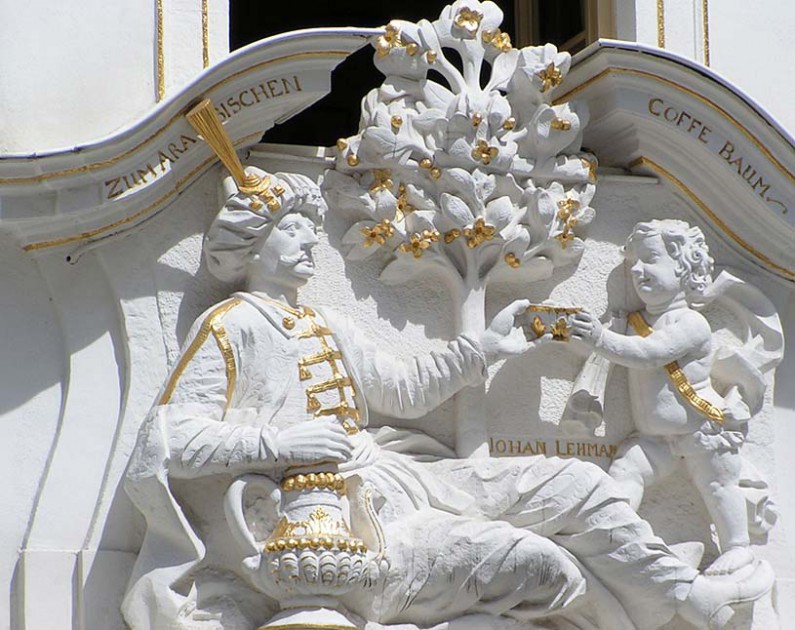
Sculpture above the doorway of Leipzig coffee house Zum Arabische Caffe Baum (“The Arabian coffee tree”). Image courtesy Wikipedia
Coffee’s euphoric effect, attested to by these origin-legends, led to it being labelled a drug. It certainly has mind-altering properties, similar to cocaine. When the body gets tired, its concentration of the chemical adenosine increases. The brain has adenosine-receptors, which induce a sense of tiredness when adenosine locks onto them. However, they can also be blocked by caffeine, a chemical present in coffee, with the opposite effect. When this happens, the body’s natural stimulants run wild, inducing euphoria and making the mind alert and receptive to ideas.

The Chemical structure of caffeine mimics that of adenosine. Image courtesy Wikipedia
These properties caused Sufi mystics to use an infusion of the grounds in order to stay awake at night, and as an aid to mystic meditation. They propagated the use of coffee as an aid to prayer, but it soon found secular utility. About 1454, the Mufti of Aden, Sheikh Gemaleddin Bensaid Aldhabani, having discovered at first hand its revivifying properties, gave approval for Muslims to consume the drink, and its popularity spread throughout Arabia, as a substitute for alcohol, banned under Islam.
A Drink Of Poetry
The revivifying and stimulating properties of coffee may be seen at the establishment known as Hansa Coffee, in Fife Road, Colombo 5. Here, on one Saturday a month, poets gather to recite their creations—or those of others—and their colleagues criticise them. They call this event Poetry P’lau, which apparently translates as “give me a drink of poetry” in Hindustani—although that may not have been the intention. And the discussion is not just about poetry, ranging into books, politics, gender, ethnicity, and even to the physiology of brain death. The poetry itself sweeps through a similarly wide array of subjects. At times funny, sometime filled with bathos, it is most often irreverent.
When this writer visited the establishment, there were just a dozen or so participants, although several others drifted in and out as the afternoon progressed. It seems that the crowd is usually bigger, 30-40 on occasion. One might wonder how that many poets could be contained within the walls of the relatively small café.

Poetic contemplation at the Hansa Coffee café. Image courtesy Mowshimkka Renganathan
And then there is the coffee. Hansa produces its own brand, which is available in supermarkets; made from indigenously-grown beans, of both Arabica and Robusta varieties, and roasted at the company’s facility in Nuwara Eliya. An added attraction is the locally grown and made gourmet chocolate, consumable as a drink or as a bar. A menu of snacks, de-rigeur for any coffee establishment today, is also available, but one goes there for the coffee and the intellectual atmosphere.
Backgammon And Chess
Hansa Coffee is built upon the model of the original Arab/Turkish coffee house, a key element in the expansion of the coffee fad. In the Levantine coffee house, men could relax, have caffeine-stimulated discussions, read books, or play board games. The concept spread from Arabia to Istanbul around 1555, and, consequently, became popular throughout the Ottoman Empire. A century later, the chronicler Ibrahim Peçevi described them thus:
These shops became the meeting places of a circle of pleasure seekers and idlers, and also of the wits from among the men of letters and literati, and they used to meet in groups of about 20 or 30. Some read books and fine writings, some were busy with backgammon and chess; some brought new poems and talked of literature.
Turkish coffee houses became meeting places for friends, places of entertainment and localities for the collection and dissemination of oral culture. Here, they only served coffee, known as “the black pearl”, strong and bitter. Many of the anachronistic tales of the folk-hero, Mullah Nasruddin the wag, take place in coffee houses, evidence of the ubiquity of the institution.
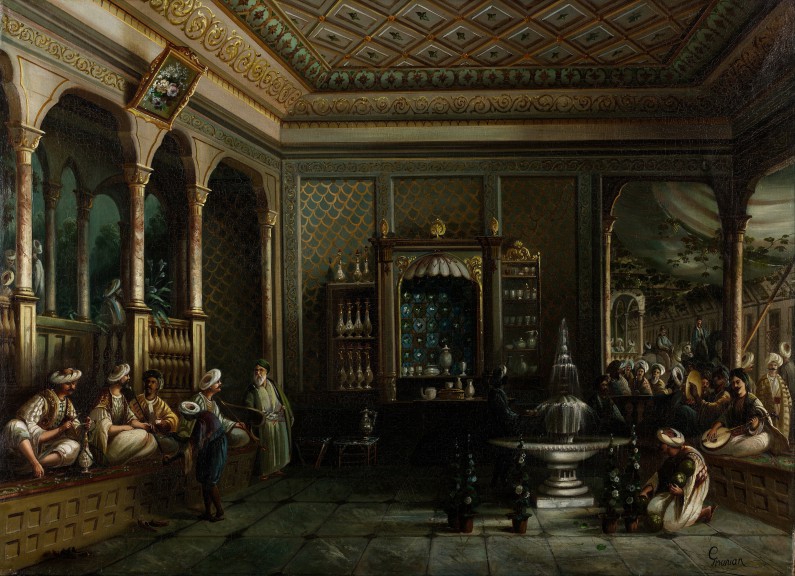
An Ottoman coffee house in the Istanbul neighbourhood of Tophane, by Megerdich Jivanian. Image courtesy Wikimedia
Ottoman dominion of the Balkans made the bitter brew the national beverage from Bulgaria to Bosnia, whence it spread to the rest of Europe. Its popularity in Austria and Germany reputedly came from a warehouse packed with 500 sacks of the beans, which the Ottomans left behind after the failed siege of Vienna in 1683. However, long before that happened, Venetian merchants had begun trading in the substance in the rest of the continent.
Restoration Social Media
Greek, Cypriot, and Jewish migrants took the concept of the coffee shop from the Ottoman Empire to England; and London, under the Stuart Restoration, became Europe’s coffee capital. Hitherto, alcoholic beverages had provided the alternative to London’s filthy water. Coffee proved an exhilarating (but not intoxicating) substitute—one which the bourgeoisie appreciated, since it kept their heads clear for doing business. One street survey counted 551 coffee houses in London—compared to just 32 in Amsterdam—and other sources mentioned upto 2,000.
English coffee shops followed the Levantine model, being the chat-rooms or Facebooks of the day: people gathered there not only to sip the stimulating brew, but also to discuss the news, to savour the latest in culture—the literati, including the likes of Pepys, Dryden, Defoe, Swift, Pope, and Dr. Johnson, would tear apart each other’s plays and writing—and to conduct business.
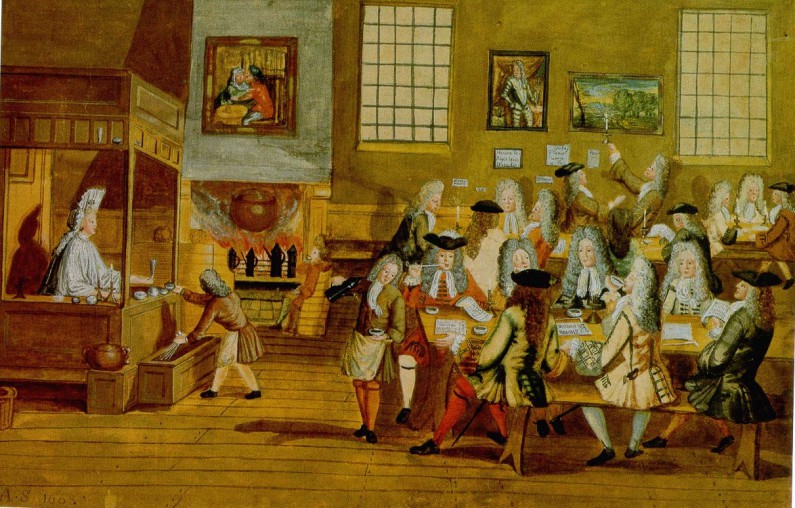
Anonymous interior of a 17th century London coffee house. Image courtesy Wikimedia
The last activity led to the genesis for some of Britain’s most sacred institutions. Ship owners frequented Edward Lloyd’s coffee house, originally situated close to the docks, so it became a centre for ship insurance and, subsequently, as Lloyd’s of London, the hub of the world’s insurance business. The Bank of England and the Fleet Street press also began as coffee houses.
Milan In Seattle
As tea replaced coffee as the favourite Brit beverage, coffee houses died out in England. However, the concept spread thence to the continent, where the pavement café emerged, and to the USA. The first coffee houses in the original 13 colonies opened in 1693 in New York.
Eighty years later, Yankee anger at the British monarch’s regime led to the Boston Tea Party, when colonials, disguised as American Indians, climbed on board ships in Boston harbour and emptied all the tea chests into the water. Ever since, coffee’s popularity has dwarfed that of tea, although its flavour took a nosedive.
Americans had to wait until the 1960s counter-culture for modern American-style coffee houses—or indeed palatable coffee. Radical socio-political movements latched on to European-style coffee houses, where they could drink un-American coffee and hang out. Seattle historian Walt Crawley said:
Going to a coffeehouse was a statement. You weren’t hanging out at Dick’s or Burger Master with the muscle-car guys after the football game or at the soda fountain like the glee club. It was about rebelling and smoking with eclectic, potentially dangerous people.
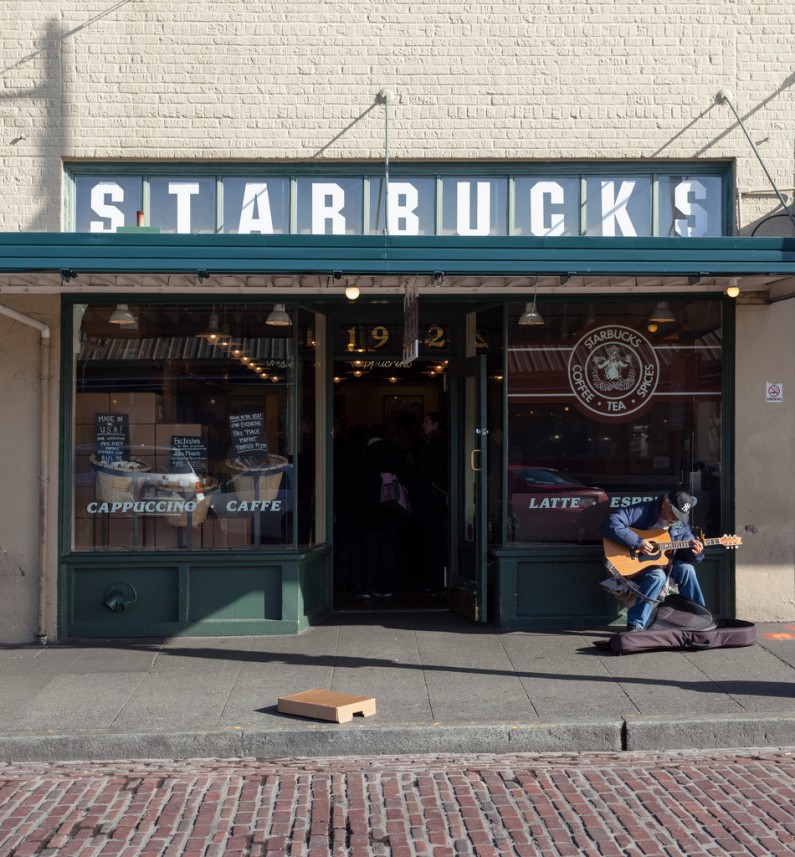
Original Starbucks. Note the old, New Age-style mermaid logo. Image courtesy Flickr.com
Seattle became one of the centres of counter-culture, through being a university town, which also made it one of the bases of the late 20th century IT explosion. “Flower people” returning to mainstream society, and ITechnocrats, as well as students and intellectuals, boosted coffee house clientele. Here, Starbucks opened its first outlet. The biggest name in coffee, it really took off when it re-branded itself in the image of the Milanese “caffe”. The modern American coffee shop is really a remodelled Italian one.
Boutique Coffee
Most upmarket coffee houses in this country follow the Italianate American coffee-chain model. A typical example is the Barista chain of coffee bars, founded as part of an Indian franchise. It set the standard, followed (with varying degrees of success) by other chains and individual cafés.
Also following the same model, but with a certain refined elegance, as against the rather brash modernist atmosphere of the coffee bar chains, is Whight and Company. Set in a re-done “American Style” house on the corner of the Marine Drive and Aloe Avenue, its decor and furniture are more post-modernist than modernist, with lots of wood. You have the choice of sitting in the interior or looking out over the sea (or watching the trains). The seating arrangements cater to solitude, intimacy, or gregariousness. The lone tablet-reader by the seaside counter, the couple sitting at a small table, or the coffee-morning crowd. A true coffee house, then.
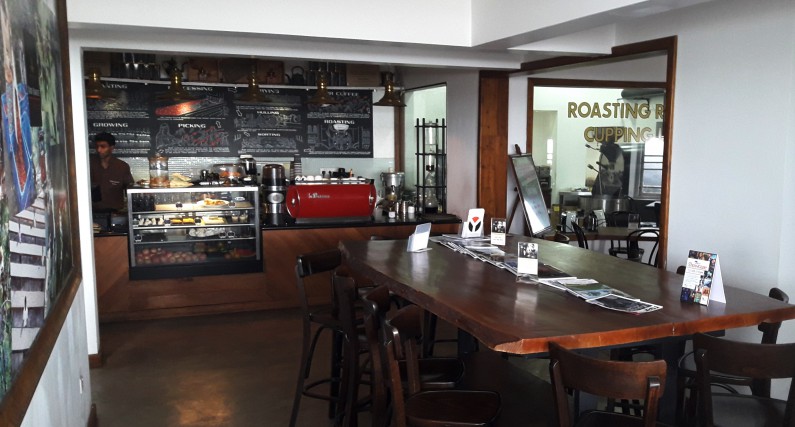
The quiet elegance of Wight & Co. Note the roasting room and cupping lab on the right. Image courtesy writer
The coffee served is boutique (in the Western sense): upmarket, excellent quality. It is roasted in-house, the manager overseeing the process. And it is grown on Whights’ own coffee plantations in the Maturata valley—whence came much of the harvest in the “coffee era” of yore. So it is more like a Vienna Heuriger, a wine-cellar with its own vineyard, than a Vienna coffee house!
Coffee Boutique
The problem with Colombo’s coffee houses is that they tend to be too expensive for Sri Lanka’s impoverished literati. “The coffee shops in Colombo are too upmarket and unaffordable, no?” one member of the intelligentsia told this writer, “They’re usually full of corporate types and international school kids.” So where do intellectuals in Sri Lanka hang out? “More in bars and kadés than coffee shops,” she thinks.
In the decades following independence, they haunted Lion House at Bambalapitiya junction. Although not strictly a coffee house—though it did serve coffee—it long served the same purpose. There, former tourism supremo Renton de AIwis recalls, “as students we eavesdropped on conversations of great minds like Bernard Soysa, Reggie Siriwardena and the like. It only cost a tea or an orange juice.”
Lion House followed on from Sri Lanka’s own rural indigenous coffee-house tradition. The men of the village (the patriarchal nature of coffee shops seems a global constant) would gather at the neighbourhood coffee boutique, or kōpi kadé. Martin Wickramasinghe, in Exploits of Ando Aiya, describes one such, which he calls a “coffee kiosk”:
The coffee kiosk was the meeting place for villagers, young and old. They gathered in the stall of the kiosk that fronted the road, to gossip and to relates jokes and yarns. The wattle and daub hut that was the coffee shop, consisted of a small room enclosed by four walls, fronted by the stall in which we sat. A rickety table carried plates full of oil cakes, and other sweet meats, as well as crisp savoury kokis.
Wickramasinghe noted the similarities between the coffee boutique and the continental tavern, but failed to make the obvious connection with the European pavement café. As in a continental pavement café, the counter would be discrete from the main consumption area—a bench placed between the stall and the main road, or indeed any place which could be used for a seat (a fallen tree or a rock) in the general landscape of the boutique. Here, the customers would sip their coffee and discuss matters of great import, whether in the village, the nation or the world at large. They would also play dām, the domestic version of the game of draughts (the term deriving from the Dutch damspiel), like the Turks with their backgammon and chess.
This institution is fast disappearing, although finding immortality in the eponymously named television comedy series—the longest running television series in Sri Lanka, and still the most popular in its time-slot. The coffee boutique setting provides the ideal context for a satire on contemporary society and politics.

Playing dām: an episode of Kopi Kade. Image courtesy ITN
The works of Wickramasinghe bear witness to a highly literate level of conversation. Unfortunately, the demise of the kōpi kadé has been parallelled by the rise of the liquor store, and the consequent, inebriated decline of social discourse.


